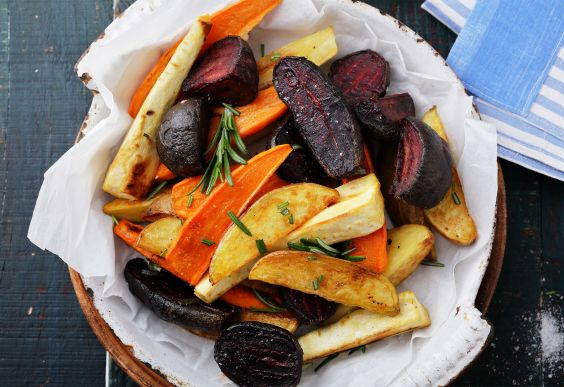If you’ve ever made dry scrambled eggs, mushy roasted vegetables, or watery salsa, you’re not alone—some foods require simple tricks to achieve perfection. These easy-to-follow tips will help home cooks create even-better-tasting dishes, so we can feel like culinary pros regardless of our kitchen experience.
1. Roasted Veggies
From Brussels sprouts to broccoli, roasted veggies are delicious—but only if they’re caramelized and crispy enough. The secret here is a simple one: super-high heat. Don’t be afraid to crank your oven up to 425 degrees. Also, a lighter, neutral-flavored oil makes for a better texture than heavy olive oil: Choose avocado or grapeseed oil for the best texture. You can also broil the veggies on high for 2-3 minutes just before removing from the oven for extra crispiness. Just don’t forget about them because they will burn!
2. Quinoa
This popular grain is reminiscent of couscous when you eat it at a cafe, so why is yours always bitter? Quinoa is coated in saponins, which are an invisible outer coating that prevents the seeds from sprouting. Quinoa’s saponins don’t taste good, so a quick soak to get rid of them makes a huge difference in its taste. Soak quinoa for 30 minutes in cold water, then rinse and drain well before cooking. You’re going to be shocked at what a difference it makes. Don’t have 30 minutes? At least give them a solid rinse.
3. White Rice
Sticky rice is great for sushi, but let’s be serious, how often are you making your own sushi? Most of the time, light and fluffy rice is the goal. The trick? Less water than you’d figure. For white rice, a ratio of one cup rice to one and a half cups water is ideal. No need to rinse the rice until water runs clear; just add some oil or butter and a hearty pinch of salt to your rice and water mixture before boiling.
4. Pancakes
When baking bread, developing the gluten is a necessity; when making pancakes, it’s a surefire way to ruin them. Keep a light hand when mixing pancake batter and stop before it looks completely mixed: Lumps are actually preferred! The lumps will settle themselves into the batter, and your flapjacks will be fork-tender instead of rubbery.
5. Seafood
If you’ve tried sautéing shrimp, fish, or scallops until golden, only to yield a mess of whitish water in the pan instead, you’ll be surprised to know you didn’t do anything wrong. Most seafood has been previously frozen and often has water injected. To be able to actually brown it, you’ll need to coat it in starch. Toss the seafood in cornstarch, rice flour, arrowroot, or wheat flour before sautéing, and it’ll hold its water inside rather than leech it out into the pan. This will also facilitate faster cooking, allowing the item to stay tender rather than get rubbery.
6. Scrambled Eggs
There are countless ingredients you can add a pinch of that chefs feel improve scrambled egg texture, the most common ones being milk, cream, and water. In truth, what will give you the fluffiest scramble is your egg to yolk ratio and the timing of your ingredients, not your liquid additions.
If there’s anything you should always add, it’s actually extra yolks; they create incredible creaminess. Use one additional yolk per four whole eggs. Add your salt before cooking, as it helps break down the egg’s protein, and don’t over-beat—a quick mix with a fork is best. To cook, opt for real butter or ghee instead of oil or spray, which will also enhance the creaminess.
7. Fresh Salsa (Pico de Gallo)
Chips and fresh salsa is a great snack, but not if your Pico is watery. After you’ve done all that work chopping, don’t drown in salsa soup: Let your ingredients shine by straining your salsa well in a colander. This should be done as soon as it’s made, and again before serving, as more water will accumulate if it’s been stored in the fridge for even a short amount of time.
See, it’s the simple things in life that can make a good thing great. Happy cooking!

